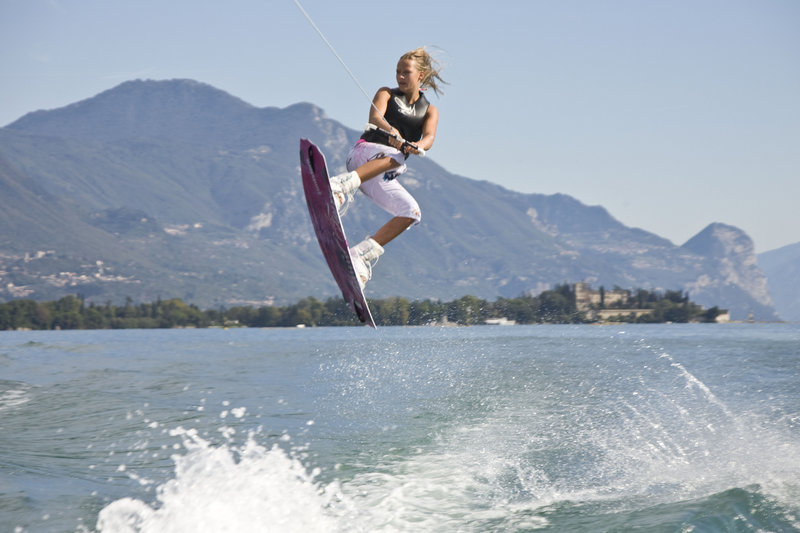Although it is possible to wakeboard behind nearly any boat which can achieve the required speeds (25+ mph), the best results are obtained from specialized wakeboard boats. These boats resemble an inboard runabout of about 5.5 to 7.3 meters (18 to 24ft), but with specialized equipment. Some riders use a PWC in place of a full-size boat for surface tricks or a rail session.
The most common difference between a regular runabout and a wakeboarding boat is the wakeboard tower, normally constructed of thick-walled stainless steel or aluminum tubing, which places the "pull point" about 2 meters (7ft) off the water's surface. The high tow point gives the rider more control and ease jumping up onto the board. Most boats feature also have a variable ballast system, which allows for water to be pumped into and out of ballast bags from the surrounding water. Adding ballast increases displacement, and consequently enlarges the wakeproduced. These large wakes are vitmplicated tricks used in professional competitions.
A significant portion of wakeboarding boats utilize V-drive propulsion. These boats have a regular inboard engine, but are turned 180° such that the transmission is in front of the engine, rather than behind, which is the more common layout. The prop shaft exits the transmission towards the rear of the boat, so that the prop is placed directly under the engine. When viewed from the side, such a layout appears as a "V" laying on its side. This layout allows for better weight distribution(with the engine farther aft), and places the prop farther forward, which reduces the danger of the spinning prop near the stern of the vessel, where riders enter and exit the water.

No comments:
Post a Comment